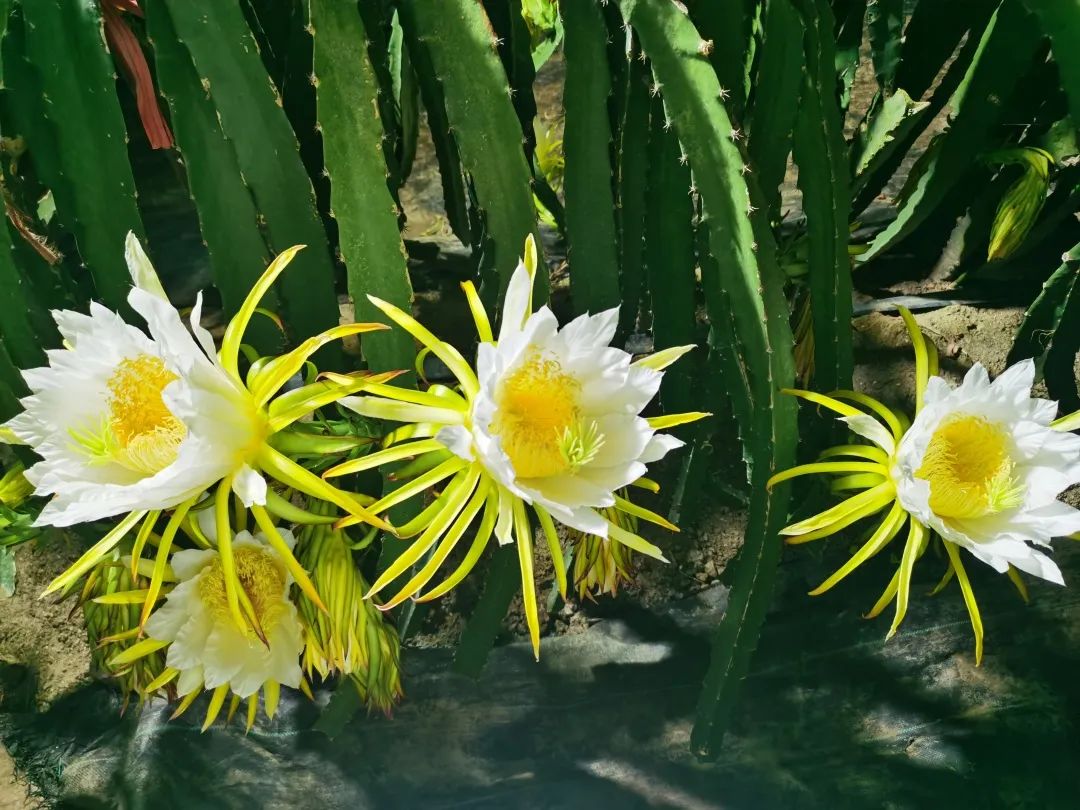还种昙花干什么?
这是火龙果花与昙花一样(图片来自网上), 吃火龙果时, 我用镊子从果肉里挑出20来个花籽,先种在花盆里,希望来年花果兼得。还没做研究,火龙果生长习性,我在油管看到有个摄影师拍多种植物生长的timelapse, 花盆里长出了火龙果。还有草莓也类似。但我就是不明白那么长时间timelapse 怎么拍的。

这是火龙果花与昙花一样(图片来自网上), 吃火龙果时, 我用镊子从果肉里挑出20来个花籽,先种在花盆里,希望来年花果兼得。还没做研究,火龙果生长习性,我在油管看到有个摄影师拍多种植物生长的timelapse, 花盆里长出了火龙果。还有草莓也类似。但我就是不明白那么长时间timelapse 怎么拍的。

一群盲流四处乱窜,意见区让他们搞成快乐大本营了
---
只能看题目,啥都点不开
Creating a timelapse video of plant growth involves setting up a camera to take periodic photos over an extended period. Here's a step-by-step guide:
### Materials Needed:
1. **Camera**: A DSLR, webcam, or even a smartphone with a good camera.
2. **Tripod or Stable Mount**: To keep the camera in the same position throughout the process.
3. **Timer/Intervalometer**: To automate the photo-taking process. Many modern cameras and smartphones have built-in intervalometer functions or apps.
4. **Lighting**: Consistent lighting is crucial. Natural light is great, but using a grow light can provide consistent results.
5. **Power Source**: Ensure your camera has a continuous power supply or sufficient battery life.
6. **Memory Storage**: Adequate storage space to save all the photos.
### Steps:
1. **Set Up the Camera:**
- Place the camera on a tripod or stable surface aimed at the plant.
- Ensure the camera is at an appropriate distance to capture the entire plant growth.
- Use manual focus to prevent the camera from refocusing on each shot.
- Set the camera to take high-resolution photos for better quality.
2. **Lighting:**
- Ensure consistent lighting conditions. If using natural light, avoid areas with significant light fluctuations.
- Consider using grow lights to maintain a consistent light source.
3. **Configure the Timer:**
- Set the intervalometer or timer to take a photo at regular intervals (e.g., every 30 minutes to a few hours, depending on the growth rate of the plant and the duration of the project).
- If using a smartphone, apps like "Lapse It," "TimeLapse Camera," or "Timelapse" can help automate this process.
4. **Monitor and Adjust:**
- Periodically check the setup to ensure everything is working correctly and the plant remains in focus and well-lit.
- Adjust the position of the camera or plant if necessary, but try to minimize changes to maintain consistency in the timelapse.
5. **Capture Period:**
- Depending on the plant and growth speed, this could take days, weeks, or even months.
- Ensure the plant has proper water, nutrients, and care during this period.
6. **Transfer Photos:**
- Once the capture period is complete, transfer the photos to your computer.
- Organize the photos sequentially.
7. **Create the Timelapse Video:**
- Use software like Adobe Premiere Pro, Final Cut Pro, or free options like iMovie, Windows Movie Maker, or even specific timelapse software like Panolapse.
- Import the photos into the software and set the frame rate (e.g., 24 or 30 frames per second).
- Adjust the playback speed to your preference.
8. **Edit and Export:**
- Edit the video as needed (e.g., add music, transitions, or text).
- Export the final video in your desired format and resolution.
### Tips:
- Ensure the camera and plant are stable to avoid unwanted movement.
- Regularly back up the photos to prevent data loss.
- Use a consistent background to avoid distractions in the timelapse.
By following these steps, you'll be able to create a smooth and engaging timelapse video showcasing the growth of your plant.
家坛网友过来唠嗑?
好像是因为谈论政治,大选期,没想到管理这么严格~
